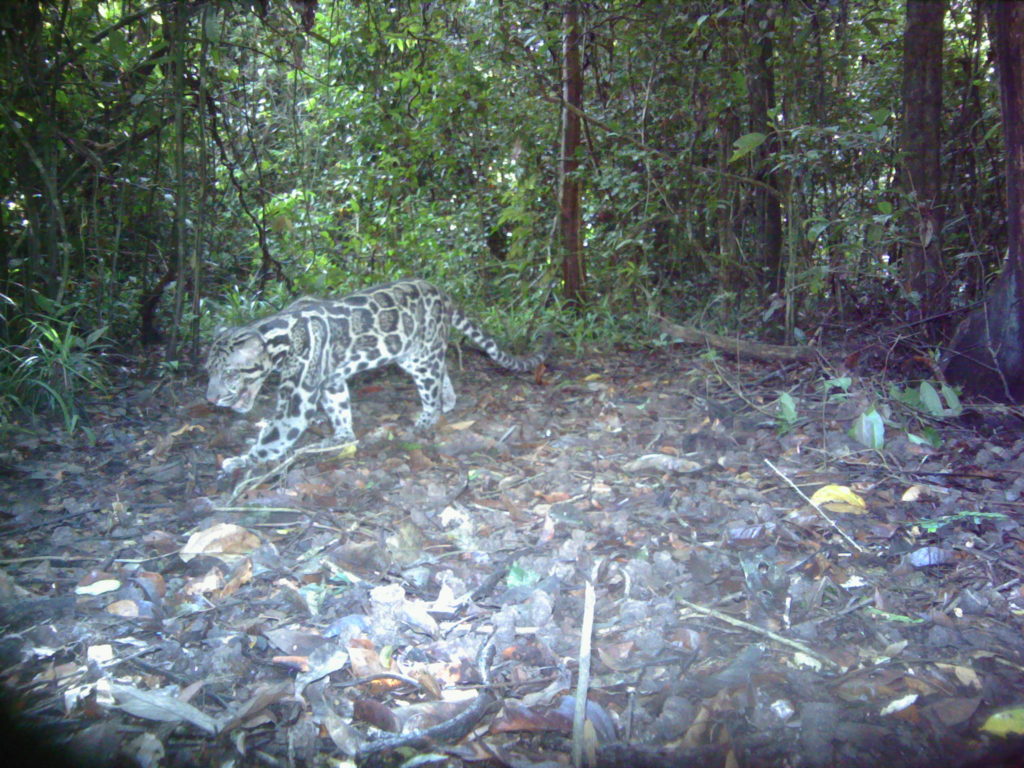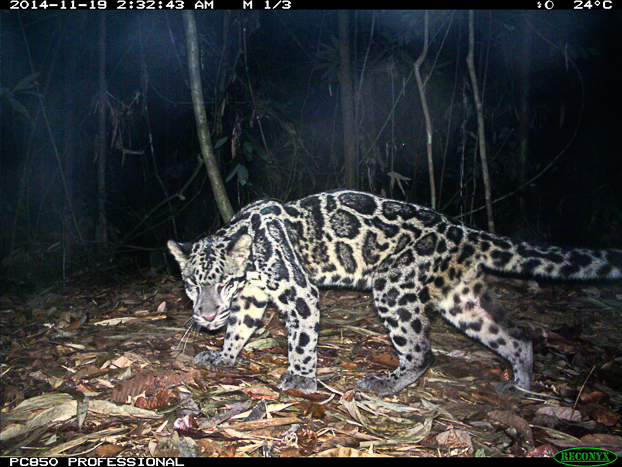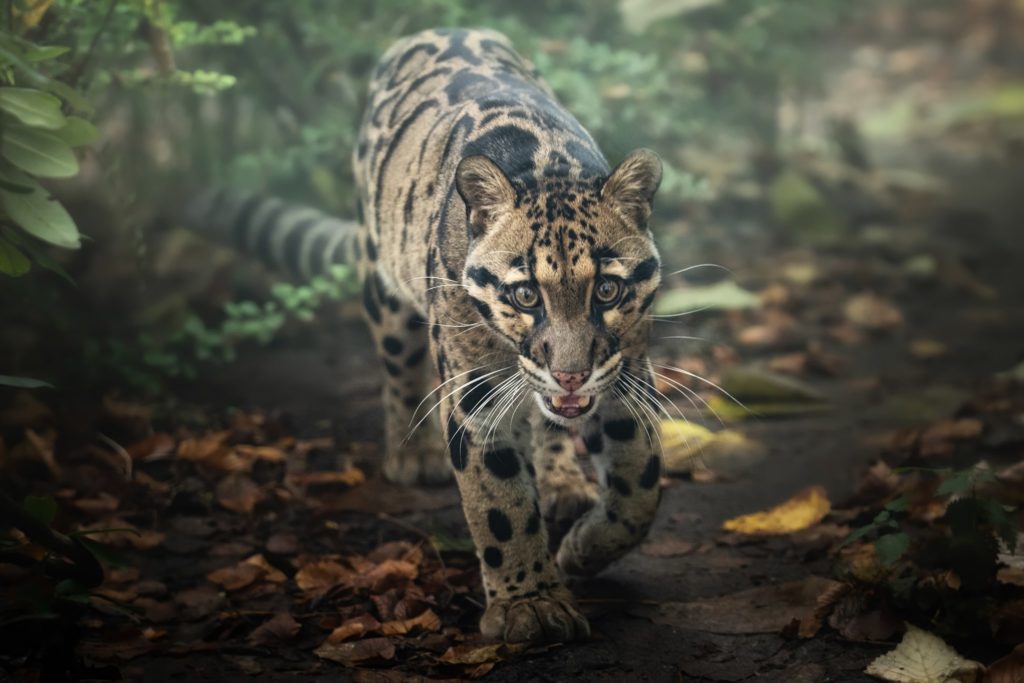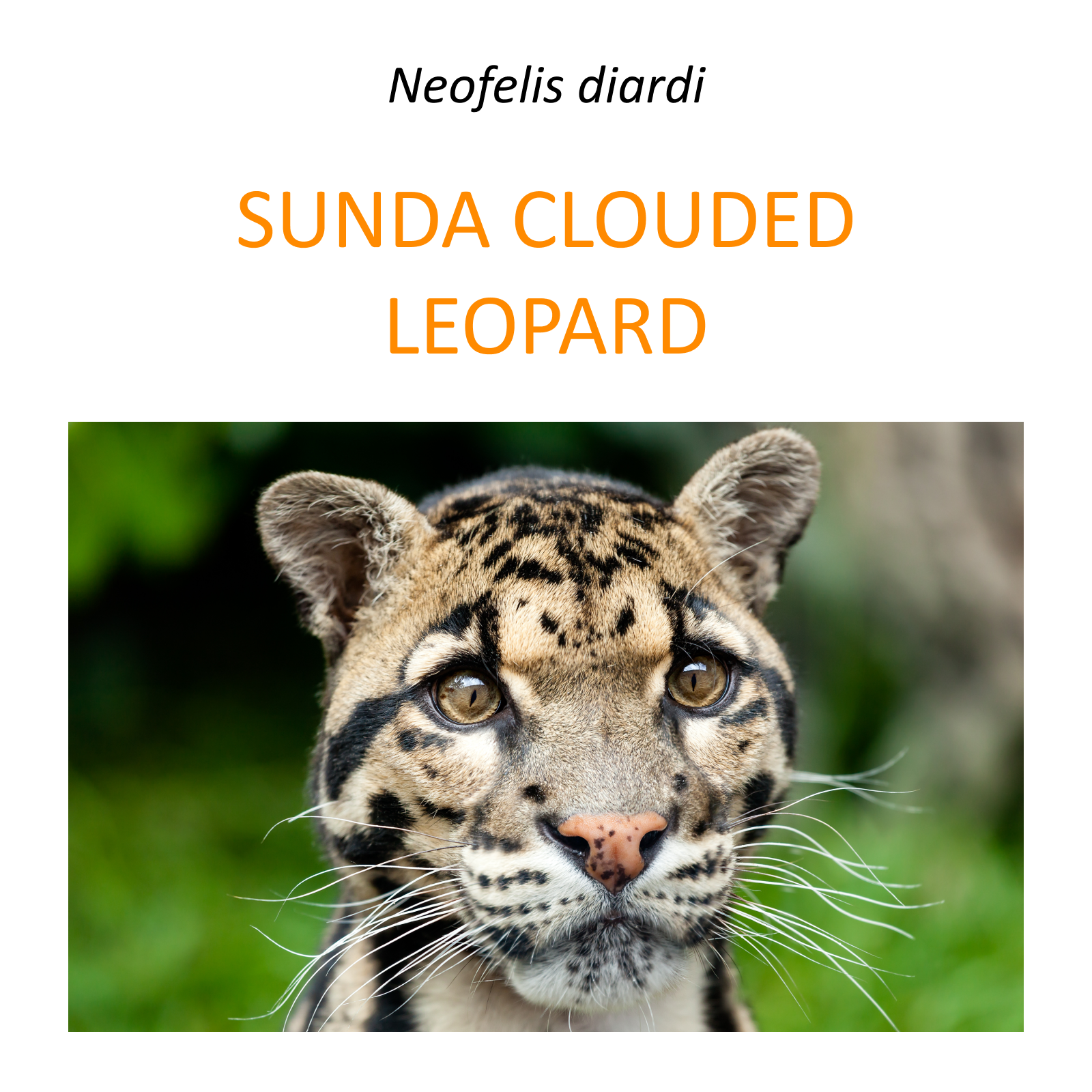Description
Clouded leopards are threatened with extinction due to hunting and the clearing of forests for oil palm plantations. The size of their population is estimated at 10,000 individuals; unfortunately, their number is still decreasing. They are considered to be facing a high risk of extinction in the wild; therefore, they are categorized as vulnerable (VU) by The IUCN.
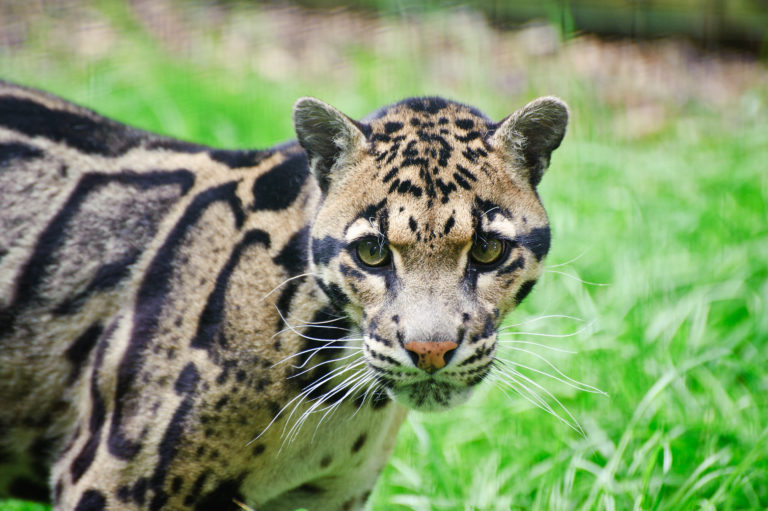
Clouded leopards inhabit wetlands (swamps and forests). They are found from Nepal to southeastern China through Taiwan and Sumatra. In 2007, scientists based on DNA studies concluded that the leopards inhabiting the islands of Sumatra and Borneo should be considered a separate species – the Sunda clouded leopard (Neofelis diardi). It differs slightly from the clouded leopards in its colouration and distribution of spots. Its coat has a greyish-brown or yellowish-brown shade. There are irregular cloud-shaped spots all over the body. Often with dark edges. It has an exceptionally long tail that provides balance when climbing trees. Its legs are relatively short, the hind legs longer than the front legs. Sunda clouded leopards can weigh from 12 to 26 kg, males being larger than females.
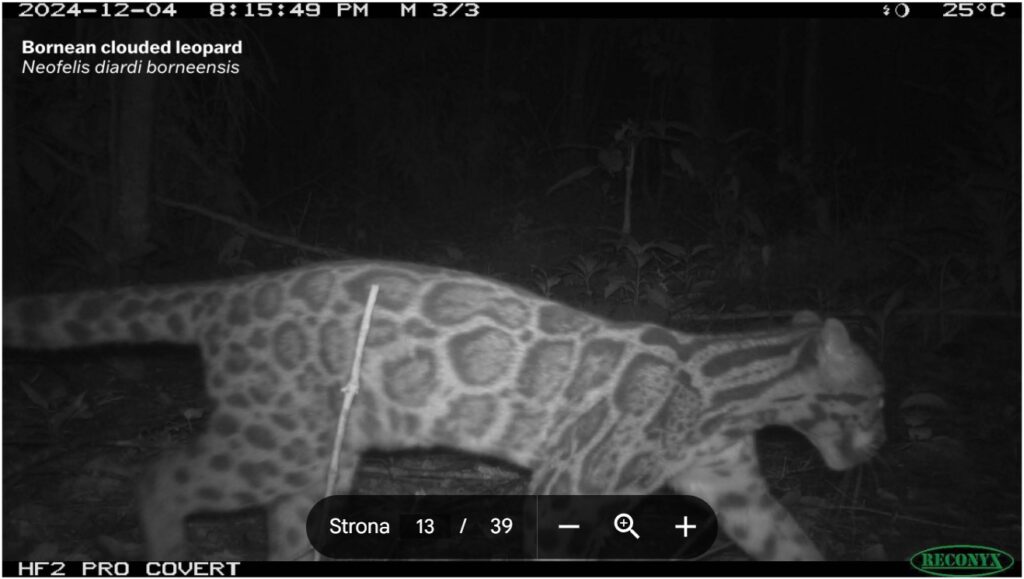
What we do?
We support clouded leopards conservation in Borneo by providing financial support to the Hutan’s wildlife monitoring program at oil palm plantations. The information obtained from the cameras shows that creating ecological corridors between the plantations and especially along the animals’ migration path to the rivers is of great importance. Not only leopards but also elephants, Malayan bears, orangutans and rhinoceroses are being captured on the cameras! The program not only serves to learn about the biodiversity of the region but also shows plantation owners that reforestation protects their crops from damage. Animals are much more likely to move through these corridors than through farmland.
Since 2018, we have been supporting the activities of the HUTAN aimed at reforesting the island Borneo.

